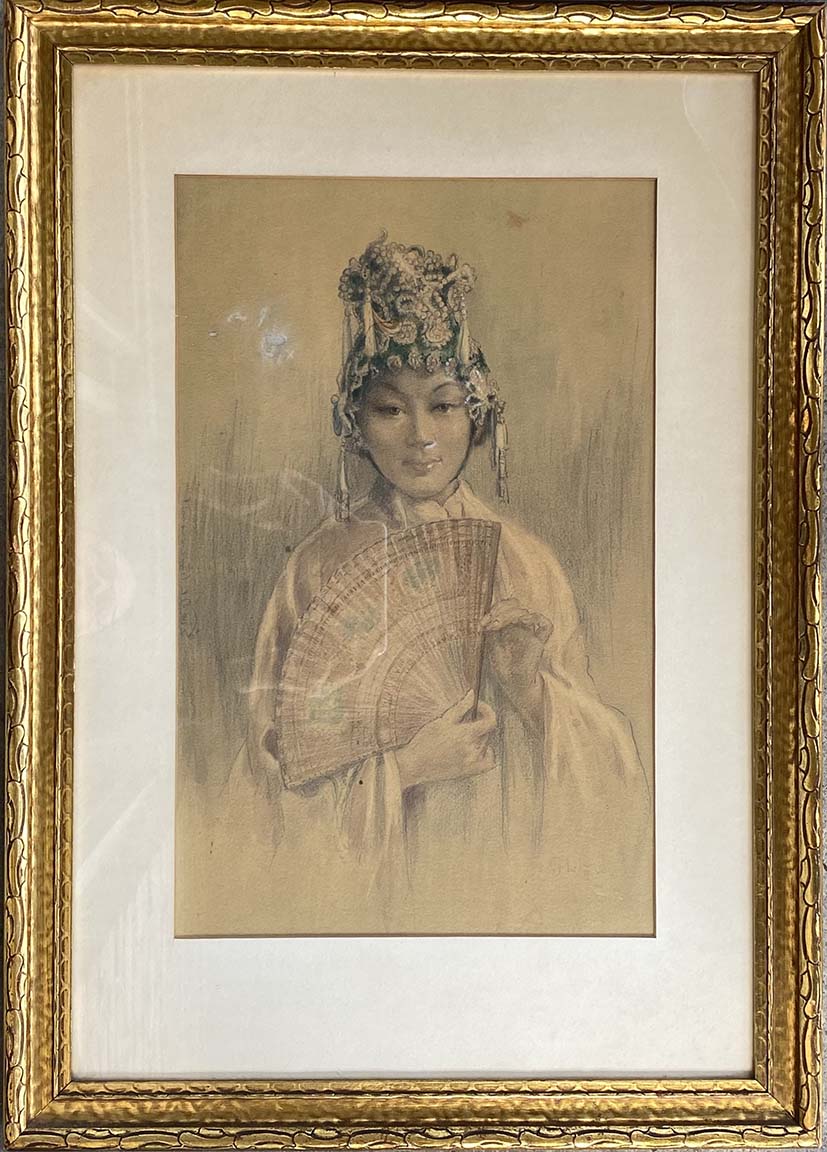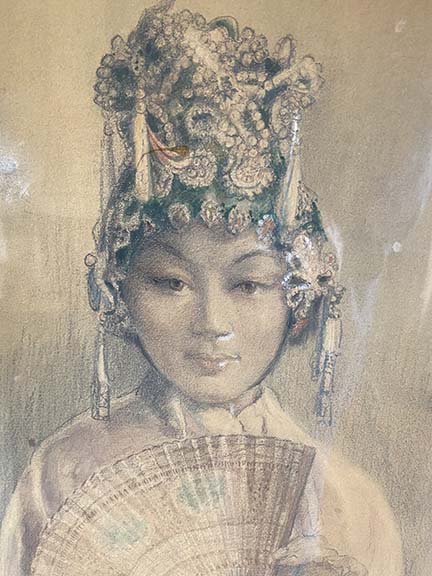Gertrude L. Pew Robinson
1876-1949
American painter and miniaturist Gertrude L. Pew Robinson was born in 1876 in the town of Niles, Trumbull County, Ohio. After her early education in Niles, Miss Pew attended the Cleveland School of Art where she received a B.A. degree in painting, graduating in the same class with her friend and colleague, Charles Burchfield. She also participated in the Cleveland School’s Residency Program in New York City where she studied at the National Academy of Design before leaving for Paris, France, where she attended classes as part of the Cleveland School’s residency abroad program during the rise of the Ecole de Paris, a modernist art movement in the first half of the twentieth century centered in the cafes, studios, academies and galleries of Montparnasse that attracted emigre artists from all over the world who flocked to Paris as one of the important centers of Western art. There students could see the new styles of Post-impressionism, Pointillism, Fauvism and Cubism, as well as other overlapping styles of contemporary expression. Artists in Paris during the period of Pew’s time there included Pablo Picasso, Amadeo Modigliani, Chaim Soutine, Tsuguharu Fougita, Maurice Utrillo, Piet Mondrian, Henri Matisse, and Marc Chagall.
In 1900, the New York Census recorded Miss Gertrude Pew as an artist living back in the city at 30 West 57th Street. During this period Pew attended classes at the Art Students League where Robert Henri led a new movement in American painting later called the Ash Can School of Painters who specialized in everyday scenes of urban life. Pew moved briefly to Boston where she established a commercial studio specializing in portrait miniature painting until 1910 when she returned to Paris to paint and to study at the ateliers of several French modernist landscape painters, followed by a tour the country visiting many of France’s premiere museums and galleries before her return to the United States.
In 1911, Pew enjoyed an exhibition of her paintings at Tiffany’s that warranted a review in the New York Times. The Wilkes-Barre Times Leader newspaper mentioned Pew’s return to the United States in a May 3, 1911 article. She was also mentioned in the 1911 issue of the American Art News magazine that noted her new studio was in the Lester Building in the heart of the arts district in New York City. In 1914 Pew was included in an article entitled, “Fine Miniatures” in the American Club Woman’s Magazine, which also included her photograph portrait in a second mention of Pew in a column entitled, “Interesting Men and Women.” The photograph of the artist was by the society photographer who signed his work as Brandenburg.
After another trip abroad in 1917, The New York Times of March 31, 1918 mentions Pew’s return to establish a studio where she painted a series of recorded portraits of Theodore Roosevelt, Andrew Mellon and many of New York’s literati. She also continued to paint small landscapes and genre work characterized by rich color and painterly brushstroke reminiscent of her student work under Henri at the Art Students League, and her studies with French landscape painters including Lucien Joseph Simon in Paris. Simon ( 1861-1945 ) was a significant painter and teacher at the Academie de la Grand Chaumiere and the Academie Colarossi. He exhibited his colorful landscape and genre paintings widely. He was elected to the Academie des Beaux-Arts in 1928.
A small undated landscape on a thin wooden panel inscribed by Mrs. Robinson as Picnic at Golden Bridge, NY, and signed G. P. Robinson recently surfaced in a private collection containing work by a number of female artists who studied at the Art Students League. This rare oil is one of a few extant landscapes by Robinson.
A scant few sources on Pew record her marriage to a Frederick G. Robinson in 1921, helping to identify the artist and the date of the oil on wooden panel scene which records a group of African Americans casually enjoying a sunlit afternoon on the grounds of an imposing Greek Revival manor home identified through comparative photography as the former home of New York Mayor, William V. Brady. Built in 1821, the historic Brady House in Lewisboro, Westchester County, New York, is near to the historic Goldens Bridge. The original bridge and several replacements with variant names have spanned the Croton River since colonial times, After the turn of the century the area around Golden Bridge, on the Croton River, was a popular vacation and day-trip location for people escaping the congestion of New York City. Located 30 minutes by auto or train from New York City, the area was known as a bohemian enclave with a multicultural and multiracial local population including members of a Jewish sect who believed in communal ownership of their land.
The Brady House, the location of Gertrude Pew Robinson’s painting, continues to stand on a remaining five acre plot of land out of the original 1700 acres in the original farmstead. The original acreage was designed as a dairy and working farm. It has recently undergone a 30 year long restoration and is considered by preservationists as one of the unique architectural gems of Westchester County, New York. A close look at the painting shows a group of African-American visitors to the park surrounding the Manor House, its barns and support buildings. The large original parcel of property was famous for its picturesque streams and waterfalls, its stone outbuildings including two mills, one for grain and the other for apple cider which was sold to New York restaurants and bars in large wooden casks marked “Brady”. For a number of years after the turn of the century and during summer weather the property was open to the public on Saturdays. The property also contains several man-made caves dug out at the time of the American Revolution and used to store ammunition and powder for the Revolutionary Army. Known as a heritage site for African-Americans after the Civil War, the caves were also used by African-Americans as an important refuge from slave hunters as thousands of formerly enslaved Blacks fled to Canada on the underground railroad after 1850, the date of the Fugitive Slave Act which allowed bounty hunters from the slave South to enter the free North to capture runaways.
Gertrude Pew Robinson died on June 28, 1949, at the age of 73 years. She is buried in New York City. Information on Gertrude L. Pew, the name most associated with her career and work, can be found in a number of available sources including the on-line Wikipedia, and Dictionary of Women Artists by Chris Petteys. Her work is included in the collections of the Pennsylvania Academy of Fine Art and the Metropolitan Museum of Art.
|


